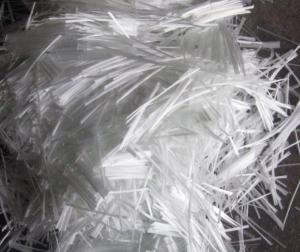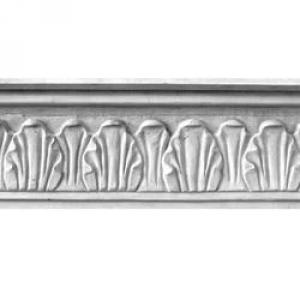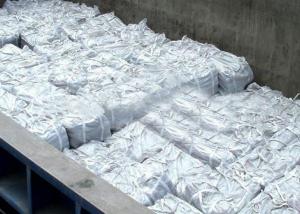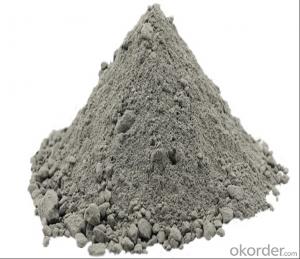Premixed Strand-Zirconia 16.5%
- Loading Port:
- Shanghai Port
- Payment Terms:
- TT or L/C
- Min Order Qty:
- 1000 Kgs kg
- Supply Capability:
- 80000 Tons Per Year kg/month
OKorder Service Pledge
OKorder Financial Service
You Might Also Like
Introduction of Premixed Strand-Zirconia 16.5%:
Premixed chopped strand designed to use in the reinforcement of concrete, renders and mortars. It may be added to conventional mixes either on site or by preblending with other dry mix components. The low-tex strand permits efficient reinforce ment at low dosages. They are particularly suited to the site operation, precast side fascia, permanent shuttering, etc. Preventing cracks and unsafety caused by vibration, especially in the making of precast beam and pillar.
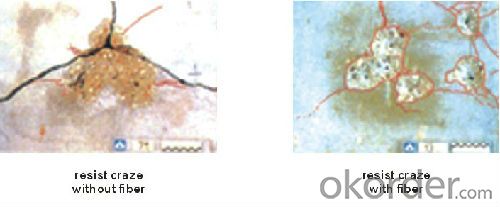

Usage of Premixed Strand-Zirconia 16.5%:
Premixed chopped strand has excsellent properties with alkali resistance, stiffness, bundle-state, ageing-proof. Mixed 20 minutes in cement at 50 rpm, can still keep good bundle state, will not dispersed to filaments.
Technical Data:
Zirconia Content(%)≥ 16.5%
Strand length: 4mm-36mm
Strand tex: 76tex
Filament da: 13μm
Moistrue content(%):>0.1
Size content(%)≥ 1.6
Breaking Strength(N/tex)≥ 0.23
Package of Premixed Strand-Zirconia 16.5%:
Pallet package and carton package for choice, and other speical package is available.

- Q: make a backsplash i have some molds at 6''x6'' and i want to make a backsplash with cement in my kitchen will the cement tiles work if i seal them or can you tell me a site to look up so info.
- They will work and there's many patterns and colors you can add too. You'll have to use a good construction adhesive on the backside to glue them in place on the wall but I'm not sure which one right now. You can butt them together along the wall or leave a gap for some tile grout to add later (tile grout comes in different colors too). Be sure to use a ready to use (ready-mix) cement mix (it has the sand in it already you only need to add water) and not a concrete mix (concrete has stones in it), some of the DIY projects do use concrete for patio stones or stepping stones but for wall tiles you only need to use a ready to use cement. There are many other sites out there too, just do a Google search for making cement tiles.
- Q: Building materials distribution business projects can increase the cement products and steel it?
- Add water after mixing into the slurry, can be hardened in the air or better hardening in water, and can sand, stone and other materials firmly cemented together For a long time, it is an important cementitious material, widely used in civil engineering, water conservancy, defense and other projects Steel: steel widely used, variety, according to the different shape of the cross-section, steel is generally divided into profiles, plates, pipe and metal products four categories The definition of steel: steel is the national construction and implementation of four essential essential materials, its wide range of applications, variety, according to the different shape of the steel, steel is generally divided into profiles, sheet metal, pipe and metal products four categories From the above analysis, cement products and steel products are building materials, can be increased
- Q: On the gas tank of my motorcycles is edged rubber and edged thin steel. The edged rubber slides into the edge of the steel. Some of the rubber has come off the edge of the steel, and I was wondering how could I glue it. I thought of rubber cement, but I don't know. Also should I prime the steel by taking some light sandpaper to it? Thanks.
- use some good super glue.. it makes a stronger bond. and the excess can be sanded off after it dries, its better to over apply than to under apply.
- Q: As in many modern houses, our en-suite shower is made up of tiles fixed onto plaster board. Over the years this has started to leak as the grouting failed, and the plaster board has become soggy and needs replacing. We have had two suggestions from different builders. One suggests ripping out the old plaster board and replacing it with quot;cement boardquot; onto which tiles would be stuck. The other suggestion involves cutting out the old plaster board, replacing it with new plaster board which would then be quot;sealedquot; before tiles are stuck onto it. Does anyone know which of these would be the better option please? Costs of both proposals appear to be similar so we really want the better engineering solution.
- Both systems would work. I think the cement-board option is a little bit better. But if you want to be really sure the shower will last your lifetime. Ask the cement board contractor if he will seal the cement board before he installs the tile. Don't ask him how much extra he will charge right off let him bring that up - but expect it to cost a little more. If the floor of the shower is tile as well insist on the sealer. as well as cement board. Most contractors don't like tile floors, they tend to go with preformed one piece bottoms - highly recommend that.
- Q: well my name is carved into the cement driveway next to my house. if my parents see that i'll be in BIG trouble. so does anyone know how to like remove writing out of the cement driveway? please anyone help. 10 points for the most helpful answer.
- Pouring cement into the grooves won't help. You may have to dig it up and put in new cement. Even caulk, which will fill the grooves, won't match the color, and it will still be visible. But I'd try that first. Get some cement caulk from a hardware store. At least you can tell your parents you tried. maybe put a lot of dirt over it, they may not notice if for a while. .
- Q: coal fly ash % used in cement?
- You can specify any amout of fly ash you want. The fly ash is cheeper that other compounds so it makes the mix cheeper. Too much will hurt the strength.
- Q: my son got some new posters and wants to hang them up. he has a very light blue (almost white) color painted on his walls (with panelling behind it) and i wanted to know if i could use rubber cement to hang them, or if it would damage the paint color after removal?
- try nail polish remover
- Q: In Manila all the Condos are completely made of cement reinforced with re-bar. Even if they are 30 to 50 floors tall! Sure I love the fact that the cement interior and exterior walls make every unit private and you can't hear the neighbors. Termites don't eat it. It won't burn. It lasts longer. But isn't it more expensive than the way they are made is the States? Cement costs a lot of money. Back in the States 30 floor condo buildings are made of a steel frame with metal floors and cement poured over the metal floor boards. The interior walls are wood frame and the exterior walls are all glass. Why do they do it different? I think they way it is done in the States is less costly. Canada builds it the same way as the U.S.
- Maybe because good lumber is expensive. Then, they would need carpenters. With cement workers, they can use the same crew from beginning to end of construction. Cost effective. I'm just guessing. I really do not know.
- Q: I have a brick fireplace that has been painted a really ugly color by the previous owners. I'm not sure if I should persue the tedious task of re-painting all the bricks , or if there is something I can cover it with. A friend suggested cement board...???... Is this the only product or is there another that would also work??
- Repainting the fireplace is actually rather easy. Make sure to use a high temperature paint designed for it like Brick-Anew. Otherwise the heat will make the paint bubble and flake off making it look like crap again. Good luck.
- Q: no tile in shower/bath surroundPosted by erik0619 on January 6th, 2006 07:42 AMPost Reply | Watch this PostI am renovating my bathroom. I don't want to put up new tile in the shower. Can I just use cement board and some type of paint so that the walls and the shower walls in the bath all look the same? I've already put up the cement board and taped off the seams what do I use in the seams? What type of paint or coating can take constant showering?
- a high gloss high quality concrete paint, the high gloss will make it easier to clean, you need to make sure that it is completely dry before you shower in it and that the concrete is completely dry before you paint it or you will get bubbles and the paint will peel. I would use a paintable silicone for the seams.
1. Manufacturer Overview
| Location | Beijing, China |
| Year Established | 1991 |
| Annual Output Value | Above US$ 20 Million |
| Main Markets | North America; South America; Eastern Europe; Southeast Asia; Africa; Oceania; Mid East; Eastern Asia; Western Europe; |
| Company Certifications | ISO9001:2000 |
2. Manufacturer Certificates
| a) Certification Name | |
| Range | |
| Reference | |
| Validity Period |
3. Manufacturer Capability
| a) Trade Capacity | |
| Nearest Port | Tianjin Port |
| Export Percentage | 21% - 30% |
| No.of Employees in Trade Department | 6-10 People |
| Language Spoken: | English; Chinese; |
| b) Factory Information | |
| Factory Size: | Above 10,000 square meters |
| No. of Production Lines | Above 10 |
| Contract Manufacturing | Design Service Offered; Buyer Label Offered |
| Product Price Range | High; Average |
Send your message to us
Premixed Strand-Zirconia 16.5%
- Loading Port:
- Shanghai Port
- Payment Terms:
- TT or L/C
- Min Order Qty:
- 1000 Kgs kg
- Supply Capability:
- 80000 Tons Per Year kg/month
OKorder Service Pledge
OKorder Financial Service
Similar products
Hot products
Hot Searches
Related keywords


